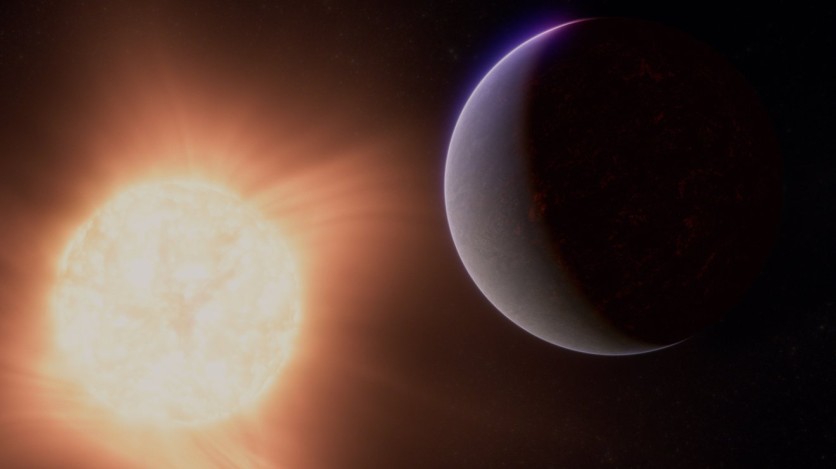The NASA James Webb Space Telescope may have made a significant discovery regarding the atmosphere of an exoplanet known as 55 Cancri e, even though the planet itself is far too hot to support life.

An Atmosphere in a Too Hot-to-be Habitable Planet
Researchers utilizing Webb believe they have detected atmospheric gases enveloping 55 Cancri e, an exoplanet located 41 light-years away from Earth. NASA said that this discovery represents the strongest evidence thus far for the presence of any rocky planet atmosphere beyond our solar system.
Lead author Renyu Hu from NASA's Jet Propulsion Laboratory in Southern California highlights the revolutionary nature of this discovery, stating that the James Webb Space Telescope has expanded the boundaries of exoplanet characterization, enabling a new era of scientific exploration.
55 Cancri e is also called Janssen and orbits a Sun-like star known as 55 Cancri. Despite its classification as a super-Earth due to its size and density, 55 Cancri e orbits extremely close to its star, resulting in surface temperatures that are likely high enough to keep its surface molten.
The proximity of 55 Cancri e to its star, about one-twenty-fifth the distance between Mercury and the Sun, suggests that the planet's surface is likely covered in molten lava. Additionally, the planet is believed to be tidally locked, with one side constantly facing its star and the other side in perpetual darkness.
Despite various observations of 55 Cancri e since its discovery in 2011, the question of whether the planet possesses an atmosphere has remained unanswered until now, according to NASA.
Abundant in Volatiles
Researchers previously speculated about the existence of a substantial atmosphere abundant in volatiles, such as oxygen, nitrogen, and carbon dioxide, based on data from NASA's retired Spitzer Space Telescope. However, they could not rule out the possibility of the planet being bare, with only a thin shroud of vaporized rock.
To differentiate between these possibilities, the research team employed Webb's NIRCam and MIRI instruments to analyze infrared light emitted by the planet. While direct imaging of 55 Cancri e is not feasible, the telescope's ability to measure changes in light as the planet orbits its star provided critical data.
The team's analysis of the infrared light spectrum also indicated the presence of carbon monoxide or carbon dioxide in the planet's atmosphere, further supporting the existence of a gas-rich envelope surrounding 55 Cancri e.
Read Also : NASA James Webb Space Telescope Maps the Weather of Hot Gas-Giant Exoplanet 280 Light-Years Away
"Key Ingredient for a Habitable Planet"
While the extreme conditions on 55 Cancri e render it inhospitable for life, researchers believe that studying this exoplanet could yield valuable insights into the interactions between atmospheres, surfaces, and interiors of rocky planets.
NASA notes that this knowledge could enhance the understanding of early planetary conditions on Earth, Venus, and Mars, which are believed to have had magma oceans in their distant pasts.
"Ultimately, we want to understand what conditions make it possible for a rocky planet to sustain a gas-rich atmosphere: a key ingredient for a habitable planet," Hu said in a statement.
Related Article: NASA James Webb Takes a Sharp Look at the Iconic Horsehead Nebula

![Apple Watch Series 10 [GPS 42mm]](https://d.techtimes.com/en/full/453899/apple-watch-series-10-gps-42mm.jpg?w=184&h=103&f=9fb3c2ea2db928c663d1d2eadbcb3e52)



